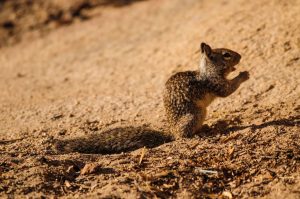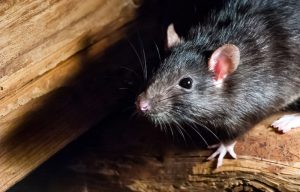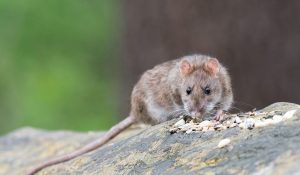No matter what kind of spider you’re dealing with, you probably don’t want to share space with them.
Here at Smith’s Pest Management, we know how to get rid of spiders because we’ve been doing this for over 15 years.
In this post we’re sharing all of the top spider control methods pest control pros use.
Key Takeaways
- To get rid of spiders, inspect your home for harborage areas and entry points, seal all gaps and cracks, remove cobwebs, clean and declutter your space, apply a perimeter insecticide, set traps, and spot-treat individual spiders.
- To stay safe during spider removal, identify venomous or dangerous spiders, dress in protective clothing, wear protective gear, and always follow the label directions carefully on insecticides.
- If your DIY efforts have failed or you need additional help, contact a pest management professional like Smith’s for expert spider control.
Safety Considerations Before You Get Started
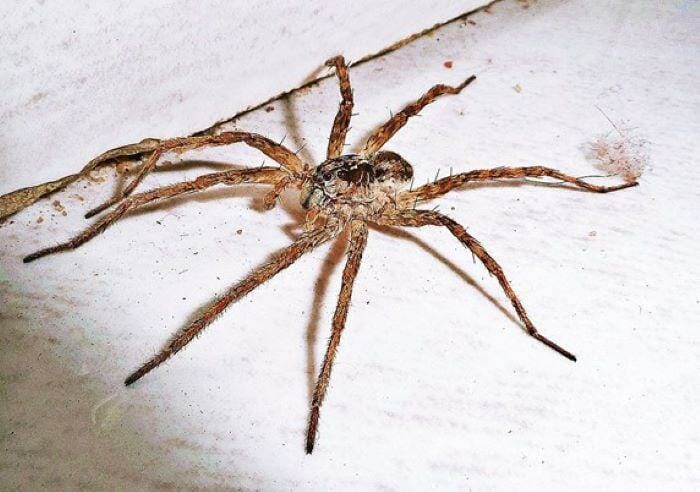
Keep yourself safe during spider control by following these safety tips:
1. Be aware of venomous and dangerous spiders
Before you begin your DIY spider removal, make sure you’re not dealing with venomous or dangerous spiders, such as:
- The brown recluse spider
- Brazilian wandering spider
- Yellow sac spider
- Hobo spider
- Wolf spider
- Black, brown, or red widow spider
- Redback spider, or
- Funnel-web spider
See the FAQ at the bottom of this article for help with spider identification.
While some spiders are harmless, these species can be dangerous or even deadly to people.
If you’re not sure whether the spiders in your home are dangerous or not, contact a pest management professional.
If you’re located in the San Francisco Bay Area, contact Smith’s Pest Management: (408) 871-6988
2. Dress appropriately
To protect yourself during spider control, you need to wear the appropriate clothing.
- Wear long sleeves, gloves, a hooded jacket or sweatshirt, and long pants.
- Tuck the legs of your pants into your boots, and tuck your shirt sleeves into your gloves.
- Use masking tape or rubber bands to secure the cuffs of your clothing and prevent spiders from getting trapped between your clothes and skin.
- Once you’re done working in spider-infested areas, shake your clothing out and inspect it carefully to get rid of any spiders, eggs, or webs that may be clinging to the fabric.
- If you’re applying insecticides, wear PPE, including gloves and a mask.
- Wear a face shield when spraying overhead to prevent pesticide mist from getting on your face.
3. Follow all label directions carefully
Read and follow all label directions on spider control products, insecticides, and other chemicals.
Applying insecticides inappropriately can be dangerous and may impact the efficacy of the product you’re using.
Keep these safety tips in mind when using pesticides for spider control:
- Be aware of your position relative to the area being sprayed; expect pesticide to fall back down when spraying above, especially when reaching up to high places like gutters and eaves.
- Be mindful of others around you, including children and neighbors, when spraying.
- Avoid spraying on windy days to minimize off-target movement.
- Use products with a good reach to maintain a safe distance from the target area while spraying.
- Always prioritize safety and follow the instructions on the pesticide label for proper application.
How to Get Rid of Spiders: A Step-by-Step Guide
If you’re dealing with spiders in your home or apartment or outside in your yard and garden, in most cases, you can get rid of them on your own by following these steps:
1. Identify harborage areas
Identify spider food sources and harborage areas inside and outside your home, as well as access points spiders are using to get indoors.
How to do this:
- Check for areas with cobwebs or spiderwebs inside and outside of your home. Pay special attention to places like eaves, cracks, crevices, and corners.
- Inspect for other pests. Spiders love to feed on bugs like cockroaches, beetles, and crickets and will infest homes with pre-existing populations of these pests. If you have pre-existing pest infestations, contact a professional pest management company for extermination services.
- Search for gaps and cracks in areas like your foundation, the cracks around windows and doors, and the gaps created by vents and utility lines that enter the side of your home.
2. Block entry points
Now that you’ve identified spider access points, it’s time to seal them to keep spiders out and prevent re-infestation.
How to do this:
- Install screens to keep pests out if you leave your doors and windows open during the day. Inspect and repair the screens as needed to prevent holes from forming.
- Add tight-fitting door sweeps to the bottom of all exterior doors to prevent spiders from entering your home through the gap beneath the door.
- Patch any holes in your foundation using silicone caulk.
- Seal and caulk gaps around doors and windows.
- Use fine mesh screens to seal entry points in exterior or interior vents.
3. Remove visible webs and eggs
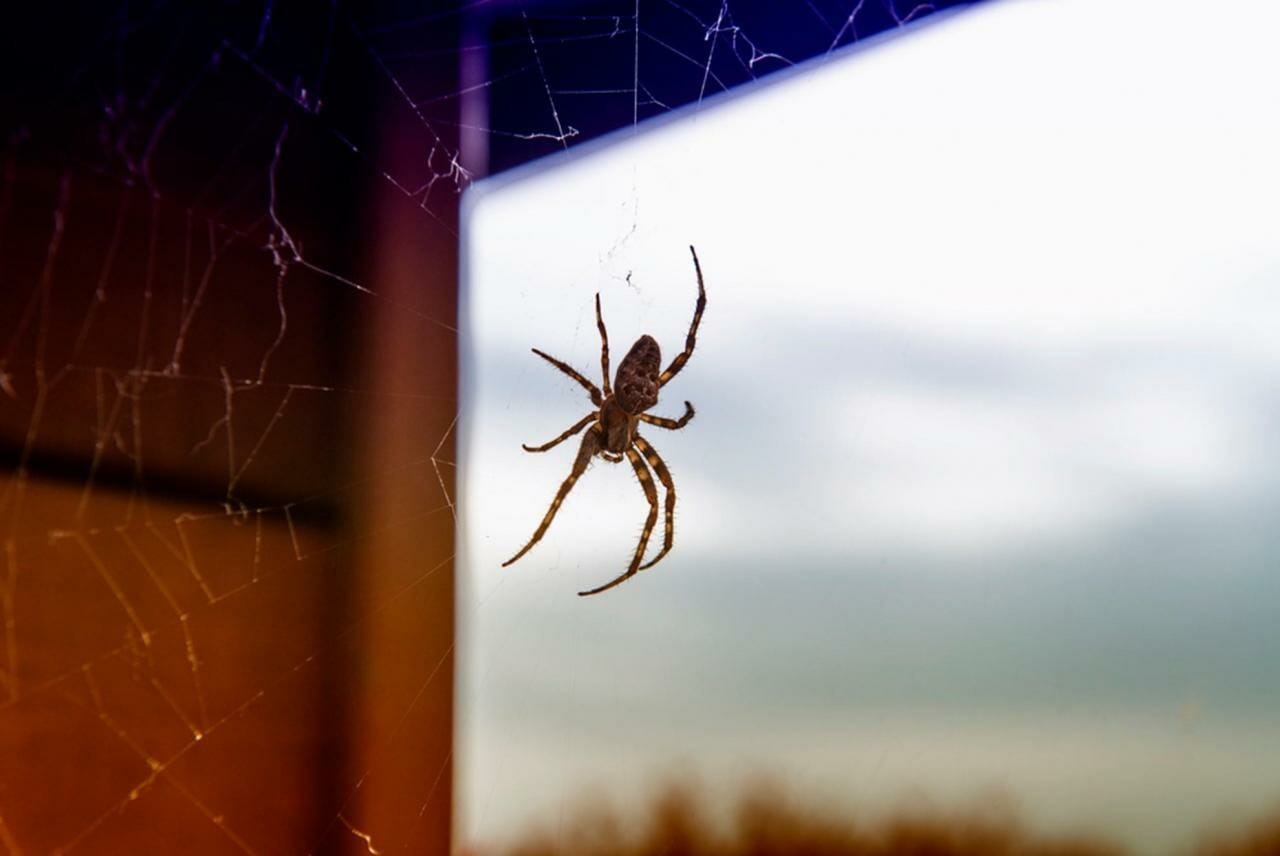
Now that you’ve identified where spiders are living, it’s time to remove their webs and egg sacs.
This is important because removing webs and egg sacs can help contain an existing spider infestation and discourage re-infestation.
How to do this:
- Before you knock down spider webs, spray them with a pesticide product labeled to kill spiders (and safe for indoor use, if applicable). When you do this, the spiders will come out to clean up the web, which will cause them to encounter the pesticide product.
- De-web indoor corners you can reach with a handheld vacuum or duster.
- After you’ve removed all webs, empty your vacuum container’s contents into a sealed bag and dispose of it promptly.
- Use a long-handled brush to destroy the webs in high-up outdoor areas like eaves or the corners between your walls and ceilings.
- Throw away any single-use dusters you used or wash and sanitize your brush heads in a mixture of bleach and hot water. This will kill any spiders or egg sacs hiding in the fibers of your brush.
- If you’re treating webs outdoors, use a cobweb eliminator like Nisus Web Out, which contains vinegar and essential oils to kill spiders on contact and create a protective surface that prevents spider webs from sticking to the treated surface in the future.
4. Clean and declutter
Clutter encourages spiders and other pests to set up shop. Even small messes, like crumbs on the floor, can attract pests that spiders love to eat.
By cleaning and decluttering, you can make your home less attractive to spiders and their food sources.
How to do this:
- Get rid of old magazines and newspapers, cardboard boxes, and piles of clothes.
- Store unused items in airtight plastic containers. In addition to preventing spiders from hiding inside the boxes, this will keep your belongings safe from dust and moisture damage.
- Promptly clean up leftover food, crumbs, and other kitchen messes. Since these messes attract pests like ants and beetles, they’ll eventually attract spiders.
- Wipe your counters and tables regularly, and wash all dirty dishes within a few hours.
- Turn off outdoor lighting since it can attract pests like moths, which will attract spiders. Alternately, swap out your outdoor bulbs for yellow sodium vapor lights, which are the least attractive to most insects.
- Remove nonessential items from the outside perimeter of your home. Leaf piles, firewood stacks, and rubbish piles all provide warmth and shelter for spiders and can attract them to your home.
5. Apply a perimeter insecticide
It’s impossible to eliminate all the spiders in any given area, and it’s nearly impossible to seal all the tiny gaps and cracks they could find their way through.
Because of this, we recommend applying a perimeter insecticide to provide an extra layer of protection from your home.
These insecticides create a spider-proof barrier that can deter spiders from entering a home.
How to do this:
- Choose an insecticide to apply. To eliminate spiders, formulas containing residual pyrethroids, chlorfenapyr, acetamiprid, silica aerogel, or fipronil are a good bet. We recommend looking for wettable powder suspensions and microencapsulated formulas, which stick to spiders’ bodies and provide a quick knockdown since they provide the longest residual protection on most surfaces. Alternatively, you can use a botanical perimeter treatment. While these tend to be safe for marine environments and other sensitive areas, they must be applied more frequently. Check out this blog on the best spider killers for product suggestions.
- Apply your perimeter treatment of choice to the areas spiders frequent, including crawlspaces, eaves, attics, and the space under porches.
- If you’re spraying insecticides above your head, use a pin stream to avoid creating pesticide mist that falls down on your body and clothes from above. Once you’re done applying the pesticide, wash your clothes and shower immediately. This will minimize the risk of encountering pesticide residue.
- Use dust formulations for treating hard-to-reach void areas, crawlspaces, and attics.
- If you’re dealing with an infestation of venomous spiders, like black widows, apply insecticides to your outdoor landscape areas, including rock gardens and foundation plantings.
- Pay special attention to dark corners both inside and outside your home.
6. Set traps
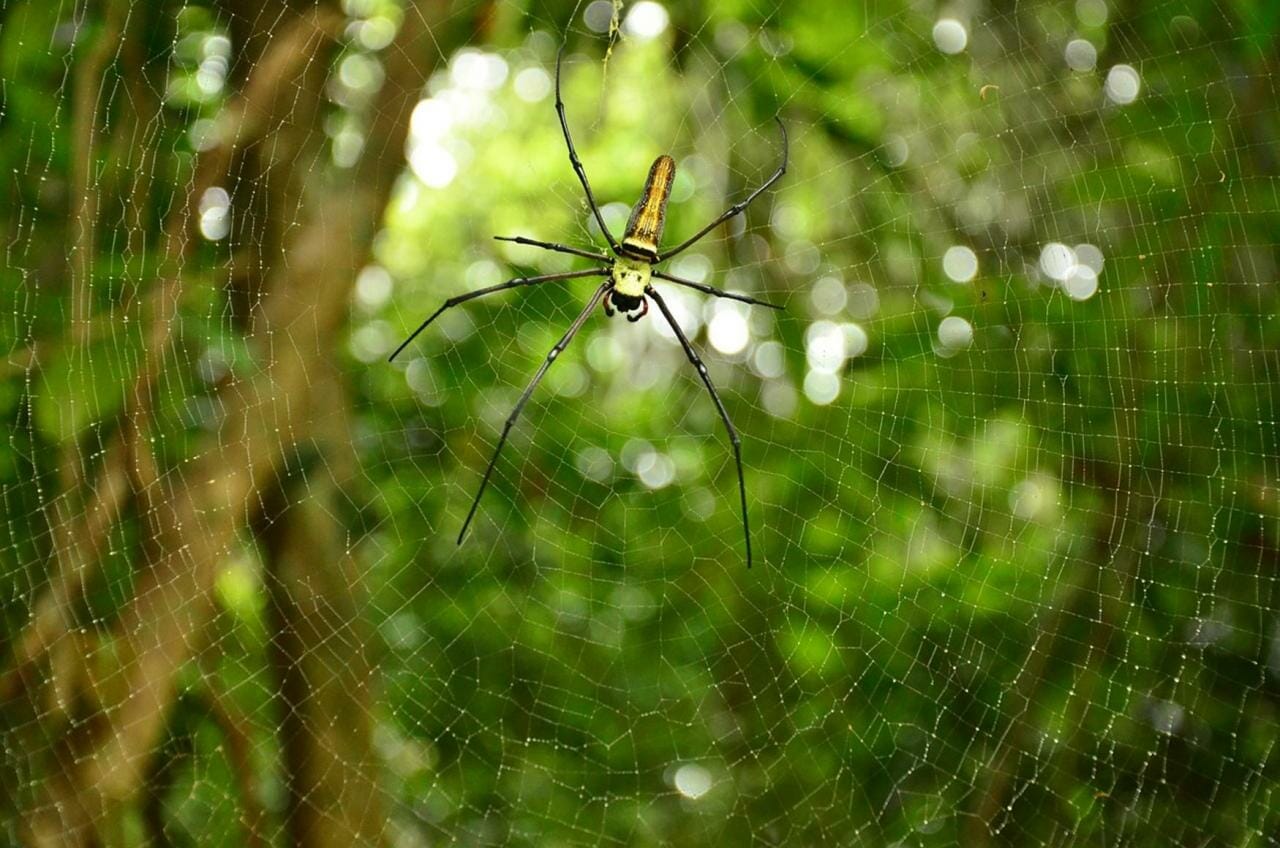
Control spider populations and prevent serious re-infestation by setting spider traps.
Spider traps are available over the counter at home and garden stores.
How to do this:
- Use sticky glue traps.
- Based on the results of your inspection, place these traps in areas where you’ve noticed spider activity, like corners, crawl spaces, attics, or the space under cabinets and appliances.
- Since the boards will gather dust, which coats the glue and decreases their efficacy, we recommend checking and replacing them every 30 days.
- Keep them away from kids and pets, and check and change them often.
7. Spot-treat visible spiders
To keep spider populations under control, spot-treat any spiders you see inside or outside of your home.
While this won’t eradicate your infestation, it’s an important management technique that can keep your space spider-free and give you peace of mind.
How to do this:
- For the fastest knock-down, we recommend using a product like CB 80, since it kills spiders on contact and is easy to apply, thanks to the aerosol formulation and accurate nozzle.
- If you’d prefer to eliminate individual spiders without killing them, use a spider catcher. A spider catcher is a hand-operated wand designed to pick up spiders in gentle, flexible fibers and hold them securely until you can release them outdoors.
If all your DIY efforts fail, or you just want some professional help, enlist the assistance of a professional pest management company like Smith’s Pest Management.
Contact us at (408) 871-6988 to request assistance.
How do Pest Control Experts Get Rid of Spiders?

Wondering how a professional pest management team gets rid of spiders?
Here’s the step-by-step process we follow here at Smith’s:
1. Remove Spider Webs
Both venomous and non-venomous spiders make webs. If you have webs, you also have spiders on your property. In addition to being unsightly, these webs harbor pests and allow spiders to reproduce.
If you have unsightly spider webs all over the interior or exterior of your home, we’ll remove them for you with our dewebbing service.
Our team will come out every other month to remove webs from your property. We also offer an optional application of Web Out (a cobweb eliminator) to help your property stay web-free.
2. Apply Pesticide Spray Treatment
Because your family’s health is important to us, we offer organic and non-organic pesticide spray treatment options to get rid of spiders.
We’ll work with you to decide which treatment is the best choice for your property, then deploy the treatment to remove spider populations.
3. Follow-Up
Once we’ve applied our initial spider treatments, we’ll visit your property to follow-up and evaluate the results of the treatment.
We’ll look for signs of spider activity, identify spider harborage areas, and provide subsequent treatments, as needed.
Are Spiders Taking Over Your San Francisco Bay Area Home? We’re Here to Help!
You don’t have to live with spiders forever.
Here at Smith’s Pest Management, we offer professional spider control services to residential and commercial customers in Northern California from Marin to Monterey.
Contact us today to request a spider control quote: (408) 871-6988
FAQ
What attracts spiders to my home and yard?
With so much space outside, you might wonder why spiders are entering your home.
Here are a few of the most common things that draw spiders indoors:
- Weather. Spiders require a specific environment to survive. When the temperature or moisture level outdoors gets too high or low, spiders will use small gaps in your foundation, siding, or weather stripping to make their way inside, seeking shelter from the elements.
- The availability of food sources. Whether spiders are indoors or outdoors, you can count on the fact that they’re living somewhere that offers them ample food. In fact, spiders often come indoors because they’re following a pest species, like ants or moths. Spiders also eat domestic waste like compost, food scraps, fruit juice residue, and crumbs. Fortunately, this means that you can control spider populations if you can find a way to control or eliminate their food sources.
- Habitat. Most spiders prefer living in dark and secluded areas like basements, crawl spaces, attics, and garages. These spaces provide shelter from the elements and ideal habitats for hunting and web-building.
- Mating. If you have one spider in your home, it will attract others when it’s time to mate. Because of this, it’s important to act quickly after an indoor spider sighting.
- Damaged areas. Spiders can easily access your home through tiny cracks, crevices, holes, and gaps in doors and windows. Some species, like the wolf spider, will enter the home through holes created by other pests, like mice. This may allow them to set up shop in the foundation or crawl space of your home.
What kind of spider is in my house?
When you find a spider in your home, identifying it might not be your top priority. It’s essential to know what kind of spiders you’re dealing with, though.
Besides allowing you to select the right removal tactic, identifying the spider will keep you safe and help you avoid harm from poisonous spider species.
Here’s an overview of the most common types of spiders.
Venomous Spiders
Wolf Spider
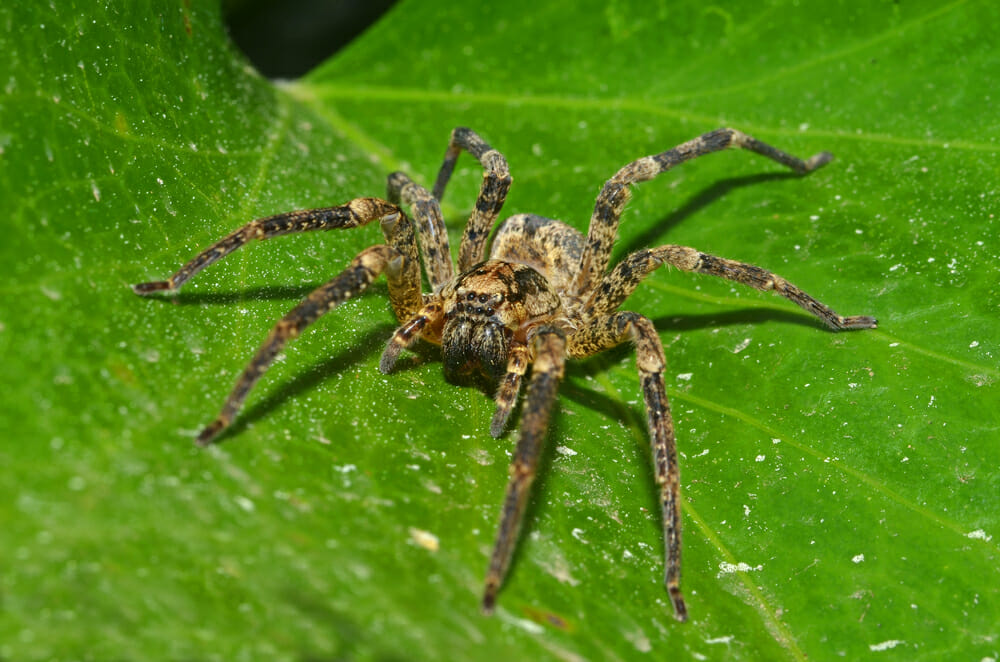
Wolf spiders live throughout the United States and are especially common in Missouri, Texas, and California. Wolf spiders are dark brown with hairy, long legs.
These spiders are known for their predatory habits: when they pursue prey, they chase and pounce upon it.
While wolf spiders are venomous, symptoms of a wolf spider bite tend to be mild and may include allergic reactions, dizziness, nausea, and elevated heart rate.
Wolf spiders burrow and spend most of their lives underground. They are nocturnal and emerge from their dens to hunt for insects and other small spiders.
Brown Recluse

Brown recluse spiders are also called violin spiders. Widely considered one of the most dangerous spiders in the US, the brown recluse’s bite contains venom that destroys blood vessels and can cause large skin ulcers.
Wounds from brown recluse bites can take months to heal or become infected. In some cases, they can even be fatal. These spiders are common in the Western and Southern US and can be identified by the violin-shaped design on their backs.
Brown recluse spiders are ¼”-½” long and tan or dark brown. They enjoy living in warm, dry, dark places like wood piles, basements, and closets.
Black Widow
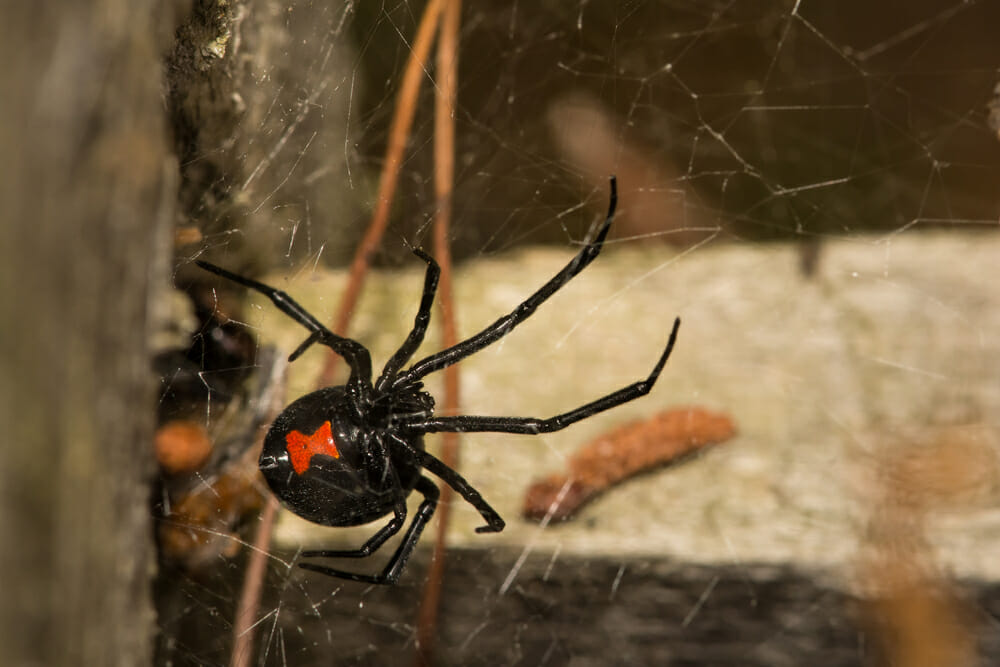
Even if you’ve never seen a black widow spider in person, you probably have an image in your head. That’s because black widow spiders are some of the most notorious in the world.
These spiders build nests in wood piles, abandoned rodent burrows, or landscaping plants and may be carried indoors accidentally.
They’re easy to identify thanks to the characteristic red or yellow hourglass design on the underside of their abdomen.
Black widow bites cause pain at the bite site, muscle cramping, nausea, mild diaphragm paralysis, and breathing difficulty.
Although fatalities from black widow bites are rare, the spider’s venom is 15x stronger than a rattlesnake’s.
Yellow Sac Spider

Yellow sac spiders are common throughout the US and are highly venomous to humans. The bite of a yellow sac spider contains venom that can cause necrotizing lesions that can be painful and quickly become infected.
Yellow sac spiders are pale beige or yellow, with dark brown accents on the tips of the legs and fangs. They are small spiders, and adults are typically about ¼” long.
These spiders build tube-style webs under stones or in leaves or grass. They hunt at night and actively pursue their prey rather than trapping them in a web.
The Brazilian wandering spider

Sometimes called banana spiders, Brazilian wandering spiders are considered the deadliest spider in the world.
Their bite contains a venom that’s toxic to the nervous system and can cause life-threatening complications, including irregular heartbeat.
Brown widow spiders
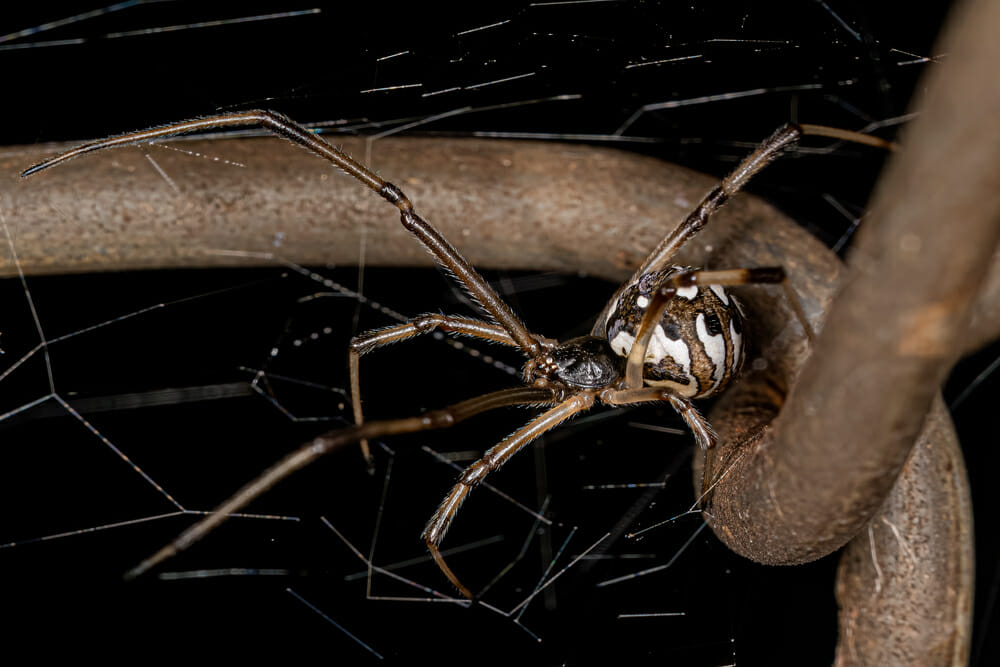
Brown widow spiders evolved in Africa and are prevalent throughout California. They’re common in homes and outside, where they make nests in shrubs and vegetation.
You can identify these spiders by looking at their abdomens, which feature an orange hourglass marking.
While brown videos have venom that’s twice as powerful as black widows, they’re not aggressive spiders. Still, their bites can be highly dangerous, so these spiders should be avoided when possible.
The red widow spider

Red widow spiders are known for their distinct appearance: they have a red cephalothorax and legs and red-brown or black abdomens.
The red mark on the underside of their abdomens tends to be hourglass-shaped or triangle-shaped, while the top of their abdomen features red or orange spots outlined in yellow or white.
While these spiders aren’t usually aggressive toward people, they will bite when threatened. Their bites can cause symptoms like pain, cramping, and nausea.
Redback spiders

Redback spiders are related to black widow spiders and are known to make nests in homes and other human-occupied structures.
They have a red stripe or hourglass-shaped mark on their backs, similar to black widow spiders.
These spiders aren’t aggressive but will bite when defending their eggs or becoming trapped against someone’s skin. Bites can cause pain, sweating, rapid heartbeat, and swollen lymph nodes.
Non-Venomous Spiders
Hobo Spider

Hobo spiders are light to dark brown, with stripes down the center and sides of their bodies. They have an oblong abdomen and typically grow to one inch-1 ¾” in length. They build funnel webs in naturally occurring holes, crevices, or cracks.
Since they are poor climbers, they rarely live above ground level. They like dark, moist areas like basements, window wells, and crawl spaces.
Despite their reputation, hobo spider venom is not considered toxic to people. Additionally, the spiders aren’t aggressive. While they sometimes bite in defense, their bites only cause mild pain and redness. Hobo spider bites are commonly confused with brown recluse bites, which are far more medically severe.
Jumping Spider
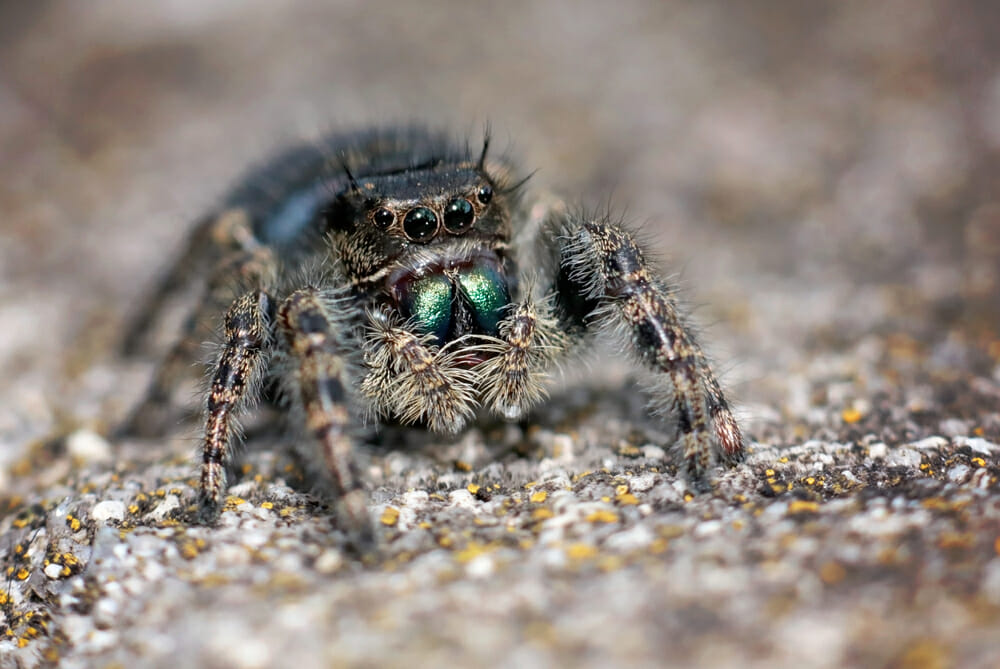
Jumping spiders earned their name because of their incredible jumping ability. There are more than 4,000 species of jumping spiders worldwide, including about 300 species that live in the US and Canada.
They are black, brown, or tan and grow to about ⅛”-¾” in length.
While jumping spiders can bite and do create venom, the venom is not poisonous, and the spiders are not a threat to human health.
Daddy Long Legs
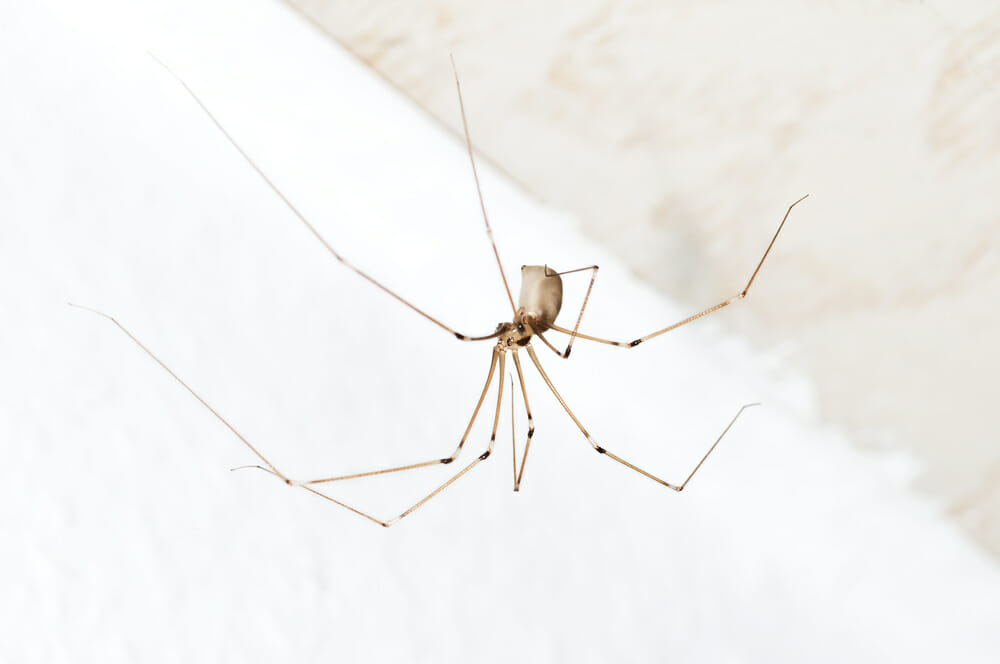
Daddy long legs are a common occurrence in California.
As a species, daddy long legs are victims of misinformation. For example, some claim that daddy long legs are the most poisonous spiders in the world, but their fangs are too short to bite humans.
Fortunately, this is just a myth.
Daddy long legs are not poisonous spiders, and their bites do not present a risk to humans. These spiders make webs from silk and are primarily scavengers, although they hunt occasionally. Daddy long legs like to live under objects like rocks, logs, and ledges.
Grass Spider

Grass spiders are common throughout the US. They build funnel webs in grass or landscaping and hunt by lunging out at insects that pass.
Grass spiders are brown in color, with two black lines running down either side of their backs. Grass spiders multiply rapidly and can quickly take over your yard or garden with their silky webs.
Technically speaking, grass spiders are not poisonous, but they are venomous. That said, though, their fangs are too short to penetrate human skin, so they’re not a threat to people.



